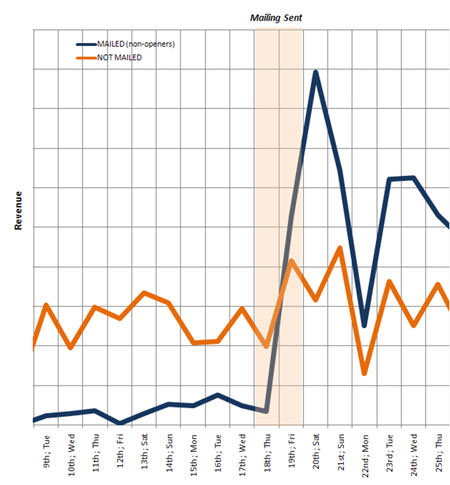Why inactive email subscribers may be too good to dismiss
Conventional marketing wisdom tells us removing inactive subscribers from your mailing list is good practice - but is it? Here, we turn that wisdom on its head. I'll show why inactive subscribers are still valuable to your business and explore how you can reactivate them. First, I'm going to tell a story of how I was recently shunned for all the wrong reasons and then give some ideas on a structured approach to make the most from inactive subscribers.
It's simple really, I was recently removed from Dell's mailing list despite spending around $40,000 a year with them online for the past few years.
In Dell's eyes however, I was inactive. I hadn't opened any of their emails for some time and so their marketing department had purged me from the list.
But the fact a customer hasn't opened your emails doesn't mean they're not engaged with your brand. In my case, I simply hadn't needed to open my email to buy any new computer equipment for a while.
Nudging customers towards your brand
Even unread, those emails were still a nudge towards the Dell brand. They were still performing a valuable marketing function whether it was in the form of an engaging subject line with the latest offers, or keeping the brand at the front of Dela's mind. And in my case, they were working.
Our research has shown that customers often buy a product or service through another channel within 24 hours of receiving an email. Here's an example:

That's why we provide clients with reports where we overlay the timing of emails sent with the timing of sales from other channels such as in-store, online, through call centers, pay per click and affiliates. Marrying together these data sets is crucial if you want to get a true impression of your recipients' buying patterns. And it's even more important when deciding whether to bump them off your subscriber list.
Email marketing can create a powerful stimulus which prompts purchases even if the emails themselves aren't being read.
Inactive subscribers are still engaged
Inactive subscribers are still valuable to your brand and can generate a significant amount of revenue.
It makes perfect sense to stop emailing someone you know would never buy your products again or who actively dislikes receiving your emails. But long-term inactivity isn't a good indicator of whether someone falls into that category. There are 5 reasons why your subscribers may be - or appear to be - inactive:
- They want your email, but haven't needed your product for a while.
- You're receiving false negatives - your email is optimized to be read with image blocking on, so some subscribers could be opening it without you knowing.
- The subscriber doesn't want your email, but doesn't care enough to unsubscribe.
- Email address churn - the subscriber no longer uses or rarely checks that email address.
- They don't see your email because it goes into the junk folder.
By far the largest group is the first one - we call these people the unemotionally subscribed. They will happily ignore your emails until they're ready to buy, because it's easier than unsubscribing and having to remember your URL or Google you later.
We've gathered plenty of evidence on this group and demonstrated that while they might not read an email, they're still a very important customer base. For example:
- One of our clients generated $120,000 from subscribers who had not opened or clicked on the previous 25 to 40 emails.
- Another saw 14% of revenue generated by subscribers who did not open or click a single email.
Common marketing advice would have been to delete those subscribers after a year's inactivity. But by retaining unemotionally subscribed addresses, the client brought in a significant amount of additional revenue.
When to remove email addresses
We have developed a simple strategy to help you decide if, and when, to remove an email address from your list.
I recommend these 4 steps to establish which addresses are truly inactive, and which fall into the unemotionally subscribed group.
- Step 1 Start a reactivation campaign. Try to re-engage anyone who hasn't opened an email for more than 6, or even 12 months.
- Step 2 Separate your lists. Anyone who still hasn't opened an email after the reactivation campaign should be placed on a separate list to your active recipients.
- Step 3 Send the same email to each list and focus on activity. The active list will now show a truer representation of engagement and your results will not be dragged down by the dead email list. After every mailing (or month), move anyone who becomes active again to your active list, and anyone on the active list that now qualifies as inactive by your definition to the inactive list. You can now clearly identify how much revenue is generated by emailing the dead addresses versus how much it is costing you.
- Step 4 Analyze over time before deleting anyone. Within 6 to 12 months you'll have a much better sense of how long you should continue to email an unresponsive email address before removing it from the list. We have generally found it to be the point at which almost every person who opens an email for the first time in a while goes on to unsubscribe.
So that's the way we see it. What's your view?

Thanks to
Dela Quist for sharing his advice and opinions in this post. Dela Quist, has nearly 15 years of online media, advertising and marketing experience, the last nine of which have been in the email space. He is CEO of
Alchemy Worx, a digital marketing agency with a 100% focus on email marketing and a diverse client portfolio including Hilton, Unicef, Lilly, Intercontinental Hotels Group and Skype.




 Thanks to
Thanks to 


